Cyclopaedia of Classical Guitar Composers
Some useful links for classical guitar web sites and more general sites on classical music are as follows;
- Guitar Foundation of America
- Guitar And Lute Issues - Orphee On-line Magazine
- Houston Guitar Gallery
- Just Classical Guitar Archive
- Composer's Biographies and Their Works
- An Introduction to Classical Music
- Glossary of Musical Terms
Cyclopaedia of Classical Guitar Composers
|
|
|
Isaac Albeniz (1860-1909)
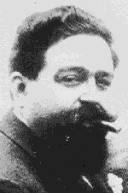 Isaac Albeniz (1860-1909) |
Isaac Manuel F. Albeniz can be said to have created a national idiom in the medium of Spanish composing. Born on May 29th 1860 in Camprodon, Catalonia, he soon showed great virtuosity on the piano, giving his first concert at the age of five. After studying in Barcelona he stowed away on a ship to Puerto Rico at the age of thirteen. After many years travelling in South America, Cuba and the US, supporting himself through recitals, he eventually returned to Europe and studied under Liszt. After working, and marrying, in Barcelona he settled in Paris. He died on May 18th 1909 from Bright's disease and was posthumously awarded the Grand Cross of the Legion d'honneur by the French authorities. The music of Albeniz is often heavily ornamented and difficult but contains characteristic beautiful melodies of a distinctly Spanish flavour. Much of his inspiration came from the different parts of Spain he visited and the lively Latin country culture he experienced. Most of his music was written specifically for piano but with the undeniably strong influence of traditional guitar music. Indeed, almost all of his works have been transcribed for the guitar and hardly seem out of place in this medium. Some evocative Spanish pieces by Albeniz include Cadiz, Cataluna, Cordoba, Granada, Mallorca, Oriental, Puerta de Tierra, Rumores de la Caleta, Serenata Arabe, Sevilla, Tango and Torre Bermeja. |
Matteo Carcassi (1792-1853)
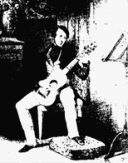 Matteo Carcassi (1792-1853) |
Matteo Carcassi was a gifted musician who originated from Florence. He studied piano as a young boy but soon changed to the guitar. He began a long and distinguished concert career in Germany in 1810 and was soon touring Europe. Amongst the many places he played and worked are London, Florence and Paris. He achieved some little fame in Paris where Ferdinando Carulli had established himself as the leading exponent of the instrument. After Carcassi had visited Italy in 1836 he returned to Paris as a teacher and published many of his compositions there. He abandoned his concert career in 1840 and died in Paris on 16th January 1853. Carcassi's work is familiar in the context of early nineteenth century guitar music but is notable in being more melodic than many compositions. He explored various effects and romantic themes and produced some very demanding pieces. His better-known works are the Method (Opus 59) and Studies (Opus 60) but he wrote almost 100 hundred compositions. |
Ferdinando Carulli (1770-1841)
 Ferdinando Carulli (1770-1841) |
In the late eighteenth century one of the primary composers for the guitar was Ferdinando Maria Meinrado Francesco Pascale Rosario Carulli. Born in Naples on 9th February 1770, Carulli learned the basics of music theory from a priest and took up the guitar in his twenties. It seems that he was largely self-taught and developed many of the now standard techniques himself. His performances and teachings were instrumental in the acceptance of the guitar in the music of the early nineteenth century, particularly in Paris where Carulli lived from 1808 until his death on 14th February 1841. With the emergence of other composers and performers of the instrument from Italy and Spain in the second quarter of the nineteenth century, Carulli's success was assured amongst the French upper classes. Carulli was a prolific composer, having completed over four hundred compositions. Many of his pieces for guitar are accompanied by piano and others involve flute, violin and voice parts. His Concerto (Opus 8) is for guitar and orchestra. Although his works are in the traditional mold they are notable for their artistic and technical quality. His famous Method (Opus 27) from 1810 is still regarded as one of the foremost training exercises for guitar students. |
Mauro Giuliani (1781-1829)
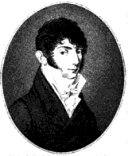 Mauro Giuliani (1781-1829) |
Born in Bisceglie on 27th July 1781, Mauro Giuliani is widely regarded as one of the early nineteenth century geniuses of the guitar, being both a virtuoso performer and a competent composer. After receiving early training in cello and violin he quickly mastered the guitar and became a local celebrity in the musical arena of Vienna where he had settled in 1806. Although his concert performances were well received, often participating in chamber concerts with other leading musicians and on 8th December 1813 playing (probably cello) in the very first performance of Beethoven's Seventh Symphony, he had little success as a composer in Vienna. He left Vienna in 1819 for Trieste, Venice, Rome and finally Naples where he died on 8th May 1829. Giuliani's compositions for guitar form much of the early nineteenth century repertoire for the instrument and number over 150. They reflect the new-found respect for the instrument in Europe at this time and, although his work is often rigid in its form, it contains a certain breath of life in both melody and harmony. His more important works include Opuses 30 to 36 for guitar and orchestra, the series of fantasias (Opuses 119 to 124) and other frequently used studies. |
Enrique Granados (1867-1916)
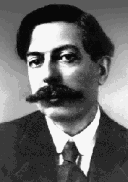 Enrique Granados (1867-1916) |
Enrique Granados was born in Lerida in the Catalonian province of Spain on 27th July 1867. His early life as a pianist and composer were not easy. He played in restaurants to support himself and his large family. He died at the tragically early age of 49 just as he was becoming successful. Whilst returning from America on 24th March 1916 his boat, the SS Sussex, was torpedoed by the Germans in the English Channel on its way to Liverpool. Granados was a composer inspired by the folk music of his country and was instrumental in the development of what many people recognise as the Spanish sound in music. His more well-known works are Goyescas, pieces inspired by the evocative paintings of Goya and the series of pieces called Danzas Espanolas. |
Joaquin Rodrigo (b.1901)
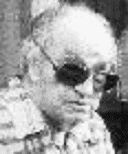 Joaquin Rodrigo (b.1901) |
Joaquin Rodrigo was born in Sagunto (Valencia) on 22nd November 1901, St. Cecilia's day, the patron saint of music. Due to an epidemic of diphtheria Rodrigo had almost completely lost his sight by the age of three. He began studying music at age eight and progressed to the Conservatory in Valencia in his teens. After studying with Dukas in Paris in the 1930s, he returned to Spain. Rodrigo's music is heavily steeped in traditional rhythms and Spanish colour but combined with a classical aptitude and tenderness. Although not a player himself he wrote many pieces for the guitar. Perhaps Rodrigo's most famous and popular work is the Concierto de Aranjuez for guitar and orchestra. The sheer depth of emotion portrayed by the solo instrument in this poetical work is a monument to Rodrigo's genius. For solo guitar Rodrigo's works are also of a high technical and emotive quality and include Por Los Campos de Espana (consisting of En Los Trigales and Entre Olivares) and Tres Piezas Espanolas. |
Andre Segovia (1893-1987)
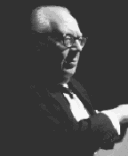 Andre Segovia (1893-1987) |
Born in Linares on February 21st 1893 Andre Segovia is perhaps the most influential figure in modern classical guitar. His father intended the young Segovia to follow in his footsteps and become a lawyer. He tried many times to divert the boy's attention away from his growing interest in the guitar which at that time was still regarded with some disapproval. Whilst studying at the Granada Institute of Music he explored the instruments past and soon became, under his own tuition, and great virtuoso. Segovia gave his concert debut in 1909 in Granada at the age of 16 and his professional debut in Madrid at the age of 20. After a recital in Paris in 1922 he toured South America and returned to Paris in 1924 to critical acclaim. As his popularity and fame grew he was in great demand on both side of the Atlantic. During the Spanish Civil War he lived in Genoa and then Montevideo, Uruguay. He was created the Marquis of Salobrena by Royal Decree in 1981 and died on June 2nd 1987. Like Francisco Tarrega the influence of Andre Segovia on the profile of classical guitar is immeasurable. His transcriptions of some of the most famous classical works for other instruments (most notable Bach) and his re-interpretation of Spanish guitar compositions, combined with his pristine technical ability, have made him almost solely responsible for the instrument's popularity in the 20th century. Although primarily a performer and virtuoso Segovia did turn his hand to composition. The richness of his few works (such as Estudio sin Luz) only hint at the possibilities he could have reached in composition. |
Fernando Sor (1778-1839)
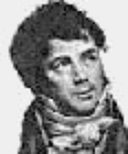 Fernando Sor (1778-1839) |
Fernando Sor was born in Barcelona in February 1778 as Jose Fernando Macarurio Sors into a respected and comfortable family. He was introduced to the guitar by his father and became, by the time he was eight, an accomplished player. With the intention that Sor would follow a military career he was accepted for tuition at the monastery at Montserrat where he continued his musical studies. After his father's death he was forced to return to Barcelona and rose to the rank of lieutenant at the military school. About the turn of the century he found regular employment as a musician under the patronage of the Duchess of Alba. When the French army invaded Spain in 1808 Sor showed his patriotism in his nationalistic compositions but when the Spanish were defeated he found himself accepting an administrative post in the French government. When the Spanish finally drove the French from their country, Sor, like many others, was compelled to leave spain, never to return. He settled in Paris in 1813 and, apart from the years 1815 to 1823 in London, spent the rest of his life there. He was in great demand as a performer playing all over Europe and Russia but gave up touring in 1827 to concentrate on composition. Sor's works for guitar form much of the modern repertoire of the instrument. Unlike many composers of the time, Sor wrote for musical effect as well as technical value. His pieces contain all the rich melodic methods of the masters such as Beethoven, Schubert and Haydn with complex contrapuntal melody lines and often bold key changes and harmony patterns. His works for solo guitar have been compared to the great symphonies for orchestra. Sor wrote almost 100 studies for the instrument and several sets of Divertimenti. Perhaps his most popular piece is Theme and Variations on Mozart's The Magic Flute (Opus 9) which is full of life but is technically very demanding on the performer. |
Francisco Tarrega (1859-1909)
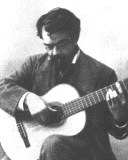 Francisco Tarrega (1859-1909) |
So great was Francisco Tarrega's contribution to the techniques and repertoire of the classical guitar that he has been called The Father of Modern Guitar. Francisco de Assis Tarrega Eixea was born on November 21st 1852 at Villareal de los Infantes, Castellon. After studying under Manuel Gonzalez (known locally as the blind sailor), Julian Arcas and Damas Tomas his talent soon came to be recognised. He enlisted at the Madrid Conservatory of Music in October 1874 to study harmony and composition. Following a successful career as a recitalist and teacher throughout Europe he returned to Spain to become Professor of Guitar at the Madrid and Barcelona Conservatories. Among his more distinguished pupils were Andre Segovia, Miguel Llobet, Emilio Pujol, Daniel Fortea, Alberto Obregon and Jose Rey de la Torre. He died on December 5th 1909 of apoplexy. Tarrega contributed to the development of the guitar in two ways. Firstly, he redefined the guitarist's technique in terms of finger action, sitting position and body posture. Secondly, he greatly expanded the instrument's repertoire by transcribing many pieces by classical and Spanish composers for the instrument. On hearing one of Tarrega's transcriptions of his piano works played on guitar, Isaac Albeniz is said to have expressed his preference for the guitar version. He also transcribed pieces by Granados, Schumann, Chopin, Beethoven, Bach and many others. But Tarrega also composed many original pieces for guitar and such was his virtuosity on the instrument that they tax the player and instrument alike. Like many Spanish composer's of the time his pieces are deeply rooted in the traditional folk rhythms and dances of Spain and contain a tenderness and expressiveness rarely matched. Some of his better-known pieces are Tango, Capricho Arabe, La Alborada, Marieta and the classical guitarist's anthem Recuerdos de la Alhambra. His 15 Preludes include Lagrima, Endecha and Oremus (written only 15 days before his death). |
Joaquin Turina (1882-1949)
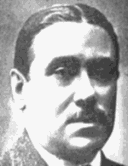 Joaquin Turina (1882-1949) |
Joaquin Turina was born on December 9th 1882 in Sevilla. After gaining some success as a musician in his native region, Turina moved to Madrid where he met Manuel de Falla and was inspired by the emerging musical nationalism of the time. After studying in Paris at the Schola Cantorum he returned, in 1914, to Madrid to follow a successful career. He died in Madrid on 14th January 1949. Turina wrote orchestral, chamber and vocal music and most of it is typical of the emerging Spanish repertoire of the time. His better known pieces include Danzas Fantasticas for piano and orchestra and the lute quartet Recuerdos de la Antigua Espana. Turina's guitar compositions are rich in their evocation of the Iberian culture and often take their influence from Flamenco rhythms and modes. Important guitar pieces by Turina are Rafaga, Sevillana, Fandanguillo, Sonata and Homenaje a Tarrega. |
Heitor Villa-Lobos (1887-1959)
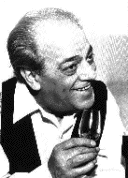 Heitor Villa-Lobos (1887-1959) |
In the 1920s Paris was bowled over by the composer Villa-Lobos who had newly arrived from Brazil. As a young man he had wandered Brazil playing guitar with street musicians and popular artists as well as undergoing formal musical training. After arriving in Europe he combined the traditional music of his native lands with the colourful tonal devices employed by composers such as Stravinsky and Rimsky-Korsakov. He died in his home town of Rio de Janeiro on 17th November 1959. Villa-Lobos was encouraged to write music for the guitar by the accomplished performer Andre Segovia. The guitar playing of his youth brought an extra dimension to his compositions; they often seem improvised or have slightly unorthodox tonal quality. They are, however, powerful pieces rich in South American vivacity. His best known guitar pieces are perhaps the Five Preludes. |
© 1997-2002 Alastair G. Gunn.